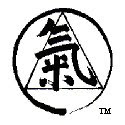"The best and safest thing is to keep a balance in your life, acknowledge the great powers around us and in us. If you can do that, and live that way, you are really a wise man." – Euripides
We are incredibly strong. However, when we compare ourselves to the creatures of the natural world, we often find ourselves wanting. We are not as strong as the lion or the elephant. We cannot swim like the fishes. We cannot run like the cheetah or the horse.
But, this is what happens when we compare and do not realize that our bodies do many of this these things very well and that there are not many animals that can do as many things as we can. When we add in the power of our brains to co-ordinate with our bodies we can on occasion do things that were never dreamt of in the animal kingdom. Specifically, I am thinking of gymnastics, skiing, skating and dance to name just a few. A fireman can rush into a burning building, pick up an injured victim, throw the victim over his/her shoulder and then run out of the building saving the victim’s life. Not many other animals can do this.
Our bodies are especially strong when our posture is good and we concentrate our weight to our physical center. Our physical center is a point midway between the front and back of our body and approximately two inches below the navel. One way to find your center is to stand with your feet about shoulder width apart. Interlace your fingers with your palms facing each other and touch the tips of your thumbs together. Imagine that at the point where your thumbs meet, a rod is piercing your body from front to back. Halfway along the rod inside your body resides your center.
Here is an exercise that will help you find your center and the incredible stability it offers from Thomas Crum’s The Magic of Conflict:
· Have a partner stand easily and naturally, with his feet approximately shoulder width apart.
· Stand beside him, facing in the same direction, so that he feels you are there to support him, not compete with him.
· Reach over and place the fingertips of one hand very lightly just above the center of your partner’s chest.
· Very slowly and smoothly increase the pressure on that point, as if you were going to push him directly back. Do so smoothly with no jerky or sudden motion. Have your partner stand naturally and not try to physically resist this pressure.
· Your partner will soon begin to wobble. Notice how little pressure it took for this to occur.
· Keeping your fingertips in the same position on his chest, ask your partner to concentrate on his center – the physical center of his body – which in a standing position, is located roughly a couple of inches below the navel. Having him touch that area with his finger will help him to focus his mind on the location.
· Slowly increase the pressure again, gently so as not to distract his thoughts away from his center. It may be helpful to tell him to take any feeling of pressure on the chest down to his center, to actually feel it “from his center.”
· As you slowly increase the pressure on his chest you will find that there is remarkably more stability, gained simply by your partner’s becoming more aware of his natural center.
What Tom has described above is the one-point (synonymous for center) exercise that was created by Koichi Tohei for the Ki Society. Once you have completed this exercise try it again, but this time have your partner think about the top of his head, the tip of his nose or a point on his back. You can even help him by lightly touching the place you want him to think about. Then, re-test him as you did above. You will find that your partner is significantly less stable when he thinks about anything other than his center. Before this exercise is completed please re-test your partner by having him think about his center so that he finishes with a positive experience.
So, are we then to walk around daily thinking about our center worried about whether or not we will fall over? At first, yes this is exactly what you will have to do. You will find that often you are not physically centered and that your mind has escaped to some other part of your body or it may not even be present in your body at all. As you practice, you will become better and better at finding your center until it becomes second nature and you will no longer have to think about it.
We have seen our bodies are very strong when we are centered. But how does centering the body affect the mind? We have all known a person in our lives that was particularly scattered in his/her mind and ultimately clumsy physically as well. Luckily for us, the converse is also true. Because of the mind-body connection our minds will also become more stable when we have stabilized our bodies. As we become better at finding our physical center our minds will remain centered as well. Decisions will be easier and faster. We will also see that the outcomes of those decisions will be more loving and caring. It is truly all about balance.
In the next post we will move back to our original list and continue that line of thought with - Maintain Proper Distance and See the Whole Picture.
Monday, February 16, 2009
Reality Check – Get Calm and Centered - Find Center and Balance
Subscribe to:
Post Comments (Atom)


1 comment:
Thank you for the reminder that self control and finding our center is often the "ch'i" to happiness.
Post a Comment